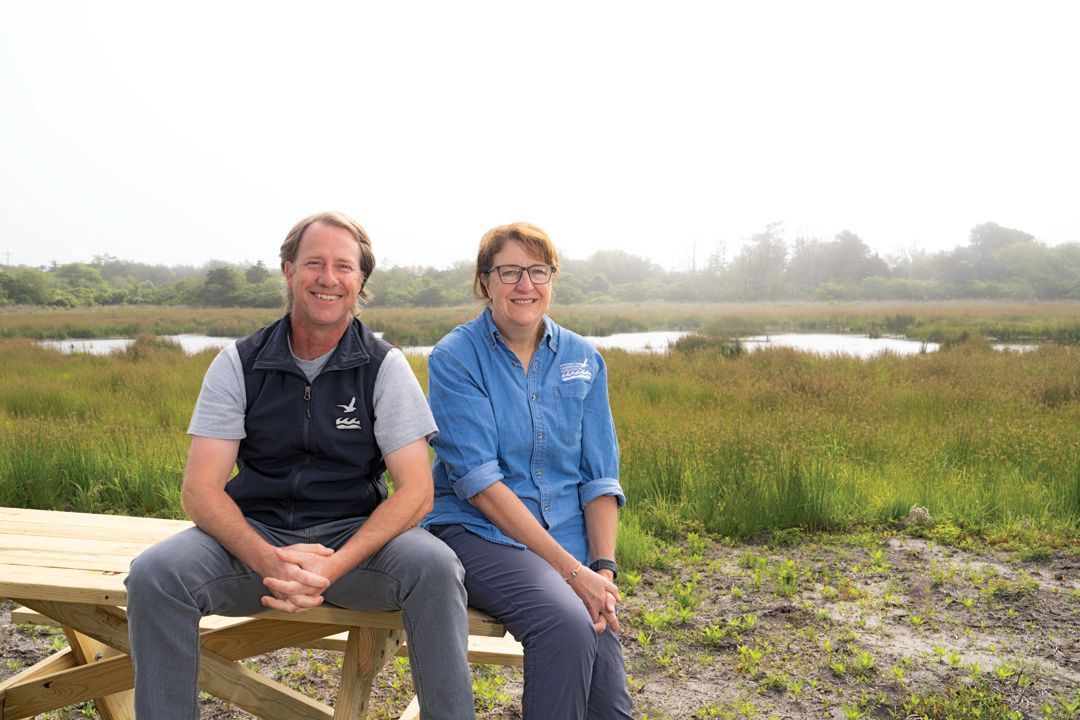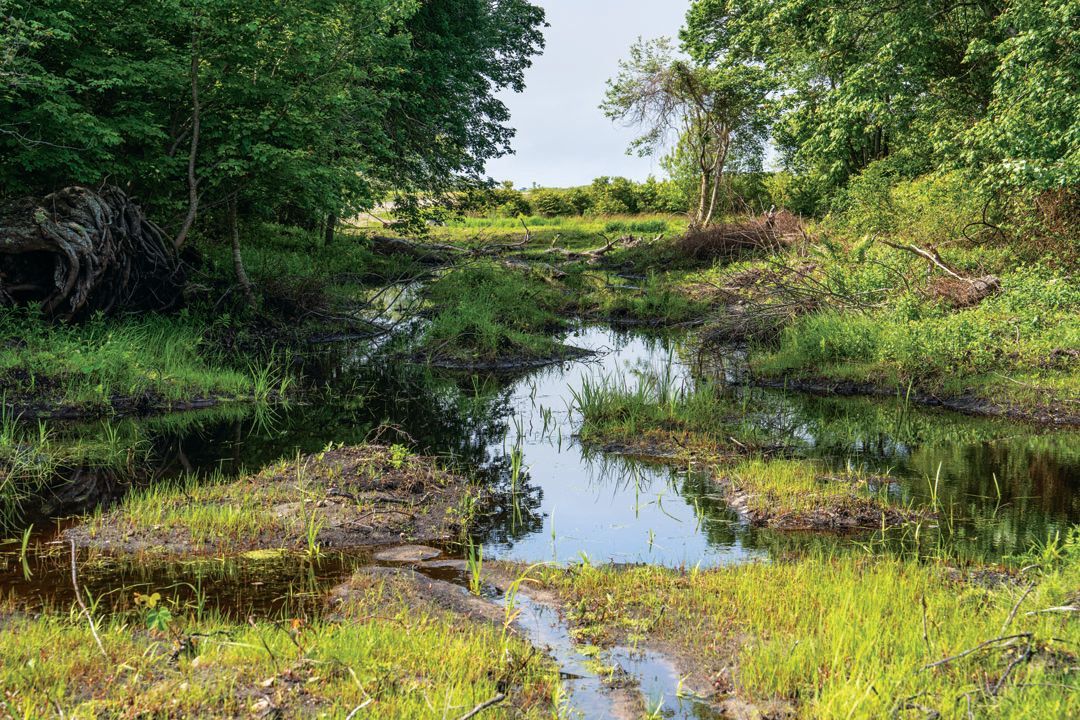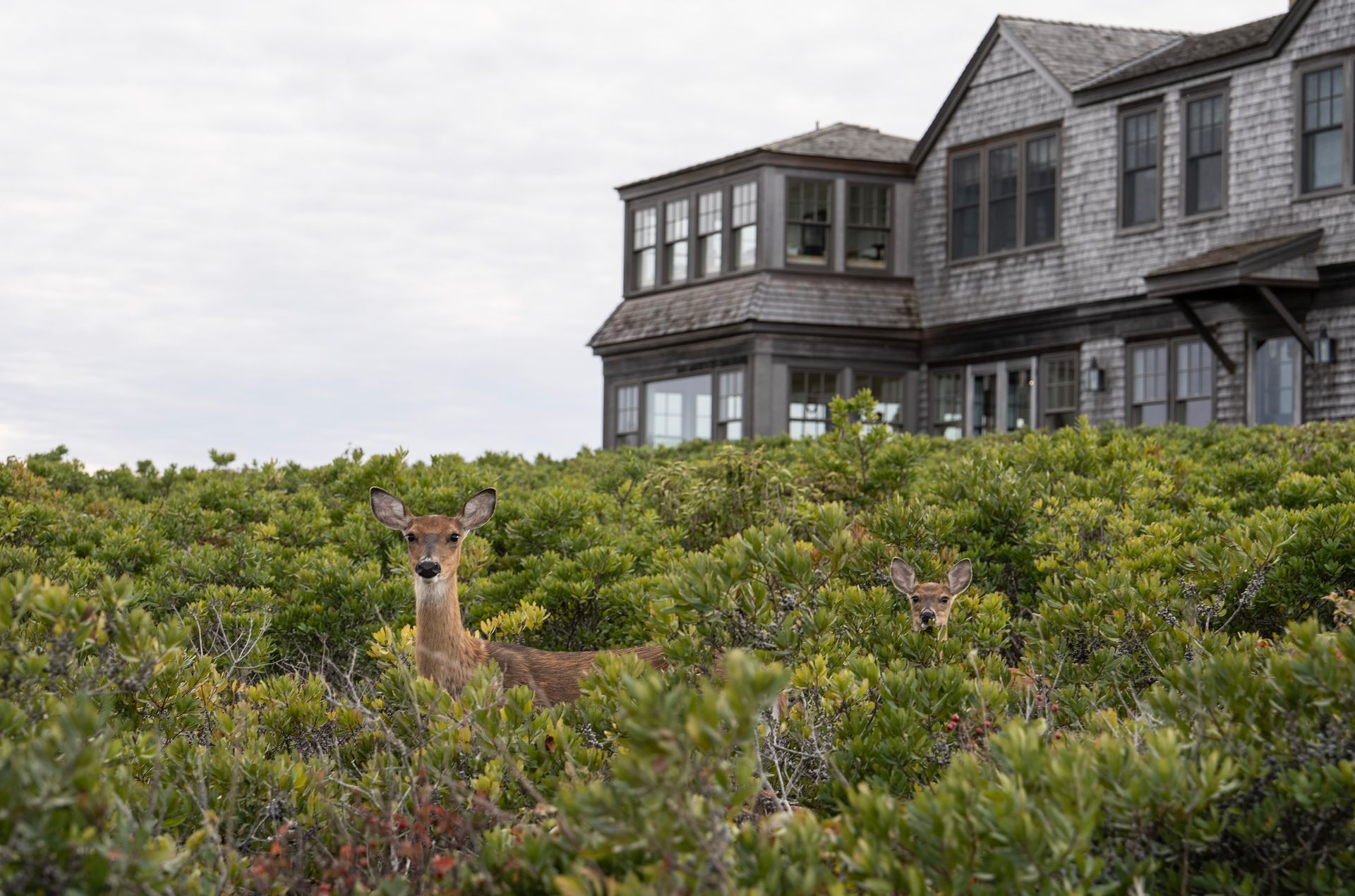A Bog Reimagined
The Nantucket Conservation Foundation restores a historic wetland.
Written by Brian Bushard
Photography by Kit Noble
Less than a decade ago, Windswept Cranberry Bog was a sea of red. The Polpis Road bog was one of two active cranberry bogs on Nantucket, part of a living legacy of over a century of cranberry cultivation on the island. But as the Nantucket Conservation Foundation’s Karen Beattie and Cormac Collier walk through the property today, what was once a 40-acre cranberry bog looks completely different.
As the profitability of cranberry cultivation plummeted, the Conservation Foundation, which owns the property, was left with a tough decision. Keep growing cranberries—potentially at a loss—or do something else with the property. “Instead of leaving it alone and letting nature take its course, we made a conscious decision to do a wetland restoration project here,” said Beattie, vice president of science and stewardship for the Conservation Foundation. “Restoring the wetlands at Windswept is an opportunity to improve water quality in the entire watershed, and particularly the watershed going into Polpis Harbor.”
The areas where there had been bogs are now a web of wetland marshes and grasses, connected by boardwalks and walking trails. Shorebirds, frogs and spotted turtles line a new system of ponds that had been bogs. The idea is to both improve the habitat and protect the harbor from harmful nutrients that had been entering the watershed through years of pesticide and herbicide use. “What we’ve created is a wetland that has deeper pockets in the center and shallower pockets around the edge,” Beattie said. “That creates a lot more habitat diversity for plants and animals.”

The property also serves as a gateway for people to walk through the moors, into a deep network of walking trails that stretch for miles. “There was a big intention on maintaining and improving public access and making sure people could get onto the property and access the other abutting properties,” Collier, the executive director of the Conservation Foundation, added.
Cranberries have been grown on Nantucket since the 1850s and were even a critical part of the island’s agricultural history that helped keep the island’s economy alive after the fall of whaling and before tourism exploded. Windswept was constructed in the late 1800s as a private operation. Cranberries from that bog were even brought on ships to stave off scurvy. They became so profitable they were called “red gold,” according to former Conservation Foundation ranger Allen Reinhard. The Conservation Foundation acquired both the Windswept and Milestone cranberry bogs in 1979, and with it came the Larrabee family, which has run the bogs for nearly 50 years, from the late Tom Larrabee Sr. to his son, Tom Larrabee, and now to Tom Jr.’s son, Nick Larrabee.
But in recent years, cranberry growing has not been as easy as pie. Facing dwindling yields and a surge in production out of Canada and the Great Lakes region, the Conservation Foundation turned to organic growing in 2013, hoping to both lessen its load of pesticides and herbicides on the surrounding watershed, and as a way to boost its revenue by selling certified organic cranberries that could fetch a higher price at the grocery store.

Even with the organic label, the revenue from Nantucket cranberries was still a far cry from the red gold of the past. After years of consideration over what to do with the bog, the Foundation officially pulled Windswept out of production in 2019. “We felt it was more important to preserve the historical aspects of Milestone Bog given the fact it’s hard to grow cranberries anywhere these days,” Beattie said. “[Windswept] was an important place to visit. It’s the gateway to the Middle and Eastern moors. Preserving that access was an important component that preserves our mission as a conservation organization.”
Most people know cranberry growing from what they see during the several weeks out of a year when bogs are flooded to allow the ripe cranberries to float to the surface for easier harvesting. But getting to that point takes two years, not just one. The process of growing a cranberry takes a green thumb, as well as pounds and pounds of sand. Each year, a layer of sand is added over the bogs. When that happens for over a hundred years, the sand layer becomes compacted into two to three feet of sand, which in effect turns what had been a wetland into what’s known as an upland system—think scrub oaks and pitch pines with fewer cattails.
Not only does the restoration project preserve the wetland that had been there before the bogs were created, it also serves a key ecological function in purifying the watershed entering Polpis Harbor and even acts as a buffer to absorb rising waters. “Wetlands perform ecological services, so as water moves through the wetland, the plants have an opportunity to take up nutrients from the water column and use it as a fertilizer to fuel their growth,” Beattie said. “Water that exits the wetland will have fewer nutrients than water that enters the wetland.”
Phase one of the restoration project wrapped up this summer, following a three-year operation with help from the Massachusetts Division of Ecological Restoration and engineers Fuss & O’Neill and SumCo Eco Contracting. Finishing the project included a sitewide vegetation survey of over 400species of plants on the property. Conservation Foundation staff also identified pickerel frogs, green frogs, spring peepers, spotted turtles, dragonflies, migratory shorebirds, sandpipers, killdeer, painted turtles and osprey on the former bog.
One aspect of the property the Conservation Foundation is keeping in mind now is that as a wetland, the property could start to change. While it will always be open to the public, it can start to serve new ecological functions as sea-level rise eventually brings saltwater onto the property. The point is the property will be what it wants to be. Regardless of how the wetland evolves, the Conservation Foundation’s objective remains the same: “We want it to be an experience that people really enjoy,” Collier said.






